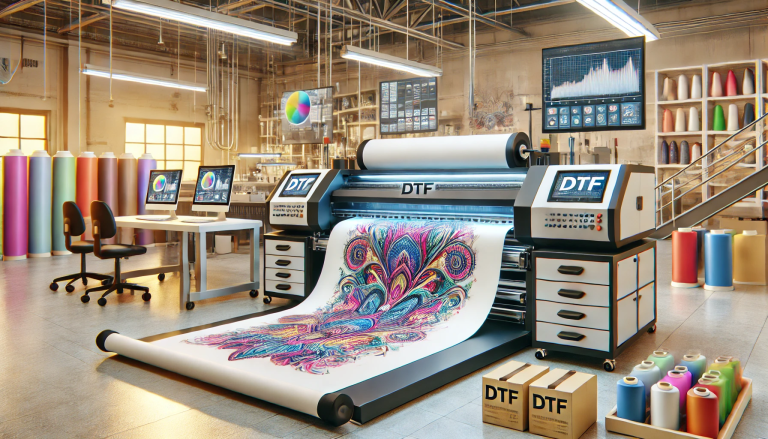“Delving into the World of UV DTF Printing: The Magic of UV-Curable Ink” -MAXDTF- UV DTF Transfer AB Film Manufacturer, UV DTF AB Paper Wholesale, Made in China
Digital Textile Printing (DTP) is at the forefront of a revolution in the fashion and printing industries, and the latest innovation to hit the market is UV DTF (Ultraviolet Direct to Film) printing. This cutting-edge technology offers remarkable precision, speed, and color vibrancy, making it an excellent choice for creating striking, high-quality designs. But what makes UV DTF printing truly special is the ink it uses: UV-curable ink. Let’s dive in and explore this intriguing aspect of UV DTF printing.
What is UV-Curable Ink?
UV-curable ink is a type of ink specifically designed to dry, or ‘cure’, under ultraviolet light. Unlike conventional inks that dry through evaporation or penetration, UV-curable inks harden almost instantly when exposed to UV light.
The composition of this ink is fairly complex. UV-curable inks are made up of oligomers (resins), monomers (thinners), photoinitiators, and pigments. When exposed to UV light, the photoinitiators trigger a rapid chemical reaction that causes the oligomers and monomers to cross-link, forming a solid, durable print. The pigments, meanwhile, are what give the print its color.
Benefits of UV-Curable Inks in DTF Printing
The use of UV-curable ink in DTF printing brings a plethora of benefits.
1. Quick Drying: As mentioned earlier, UV-curable inks harden almost instantly under UV light. This results in faster production times, which can be a significant advantage in a commercial printing environment where efficiency is crucial.
2. Durability: The cross-linking process that occurs when UV-curable ink is exposed to UV light results in a print that is resistant to scratching, smudging, and fading. This makes it an excellent choice for items that will be subjected to wear and tear or exposure to sunlight.
3. Versatility: UV-curable inks can be used on a wide variety of substrates, including materials that are typically challenging for other types of ink, such as plastics, metals, and glass. This makes UV DTF printing a versatile option for a range of applications.
4. Environmentally Friendly: Traditional inks release volatile organic compounds (VOCs) into the atmosphere as they dry, which can be harmful to the environment. Because UV-curable inks dry through a chemical process rather than through evaporation, they do not release VOCs, making them a more environmentally friendly choice.
Considerations When Using UV-Curable Inks
While UV-curable inks bring many advantages, it’s important to note that they require specific handling and equipment. For example, printers must be equipped with a UV light source to cure the ink, and care must be taken to ensure that the light is properly adjusted to fully cure the ink without damaging the substrate.
In addition, the inks themselves need to be stored and handled carefully. They should be kept away from direct sunlight to prevent premature curing, and because they can cause skin irritation or allergic reactions, protective clothing should be worn when handling them.
Conclusion
The world of UV DTF printing is a fascinating one, and the use of UV-curable ink is a game-changer, offering speed, durability, versatility, and environmental friendliness. It’s a testament to the innovation in this industry and showcases the remarkable strides technology is making in the world of digital printing. Whether you’re a seasoned printing professional or simply interested in the technology behind the scenes, the realm of UV-curable ink and UV DTF printing is worth exploring.



